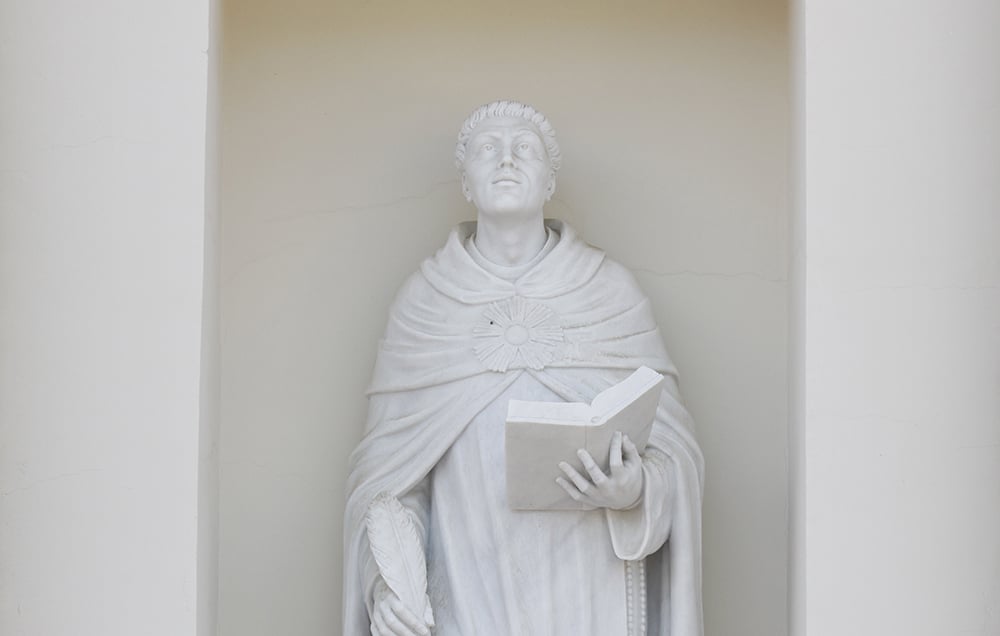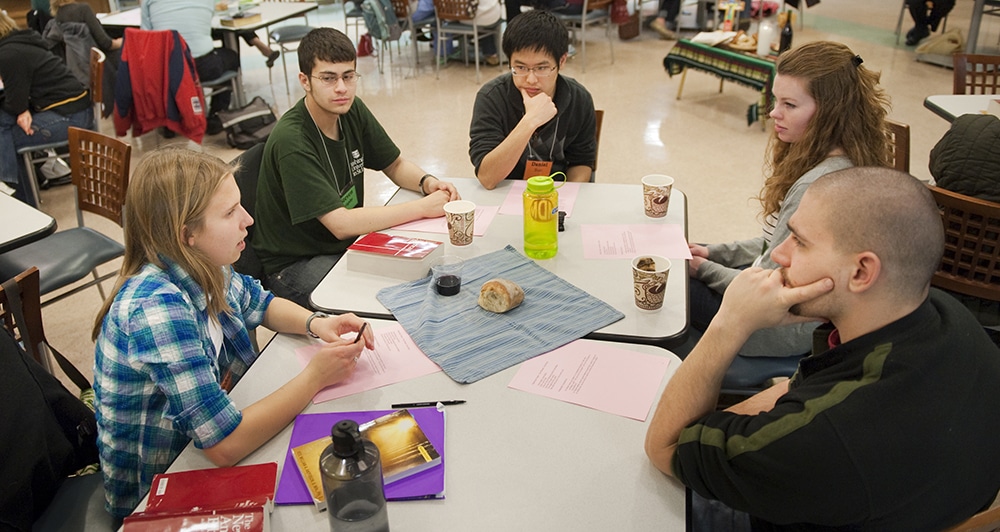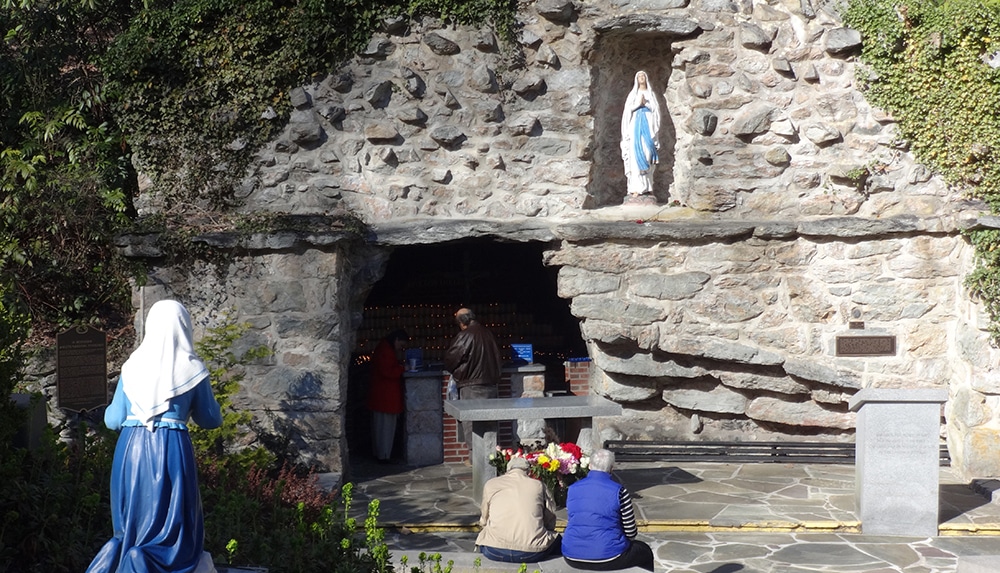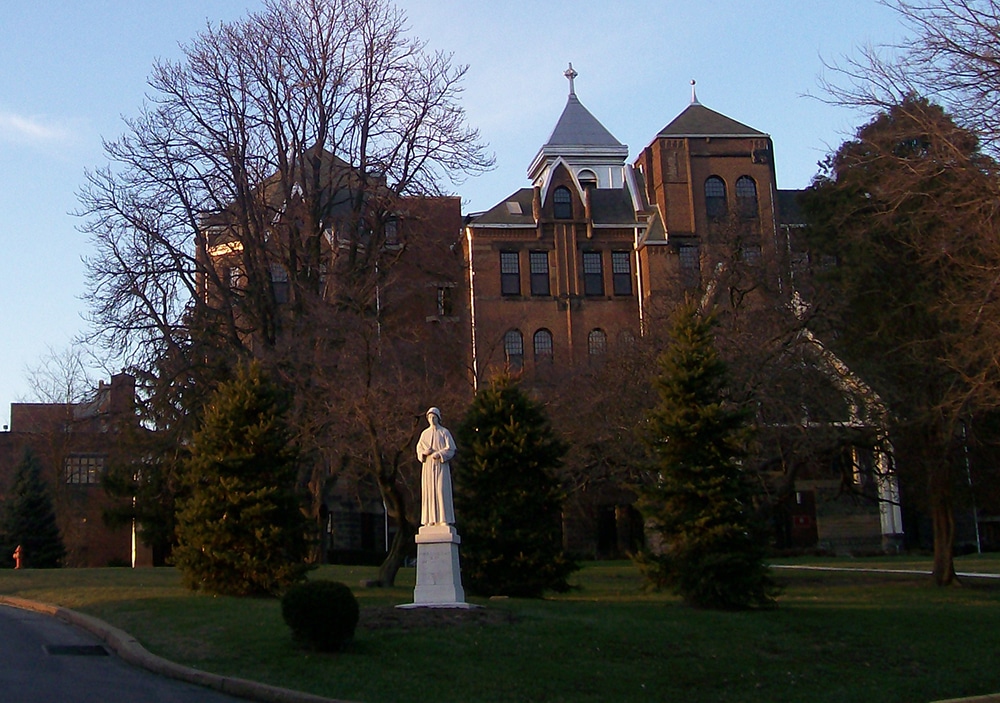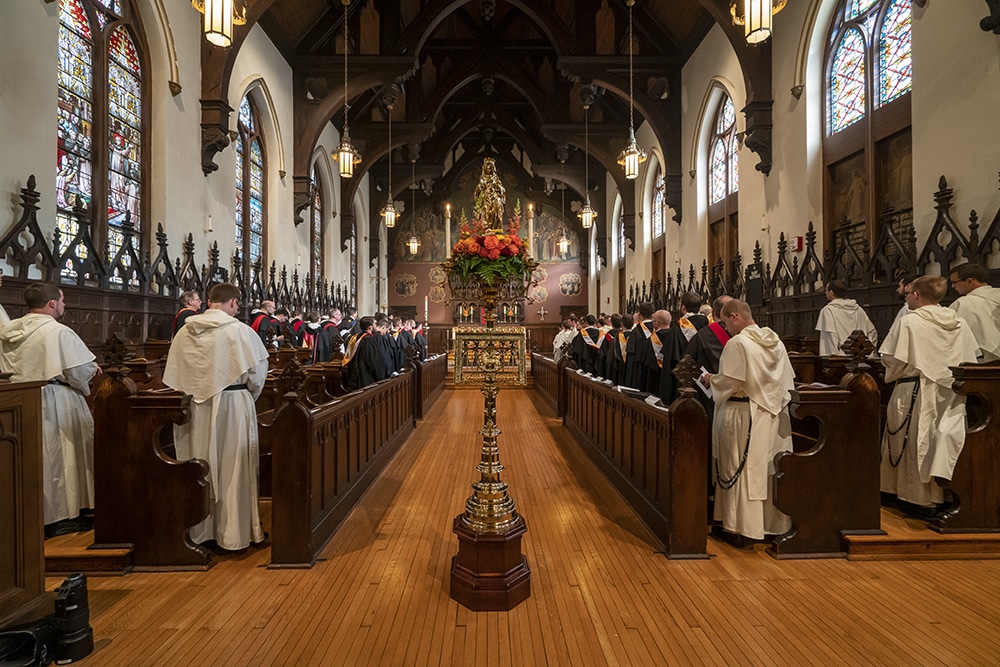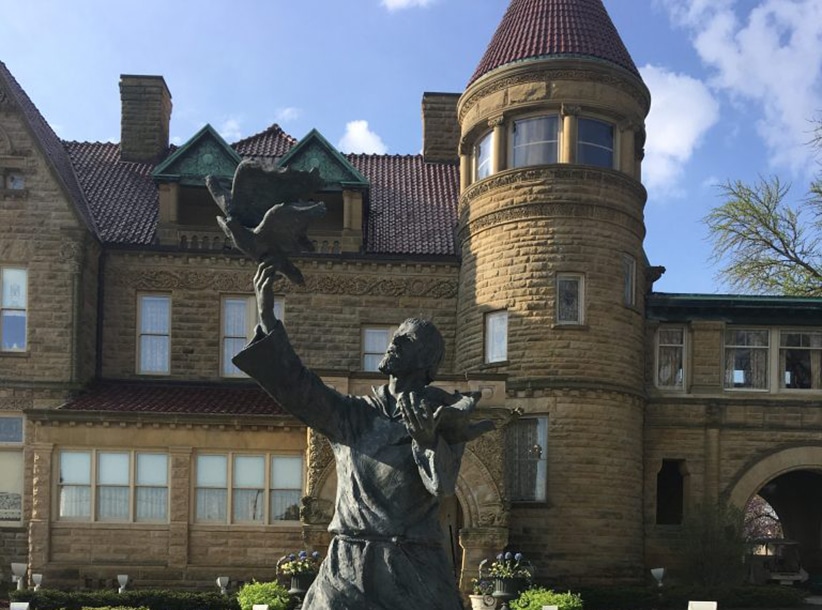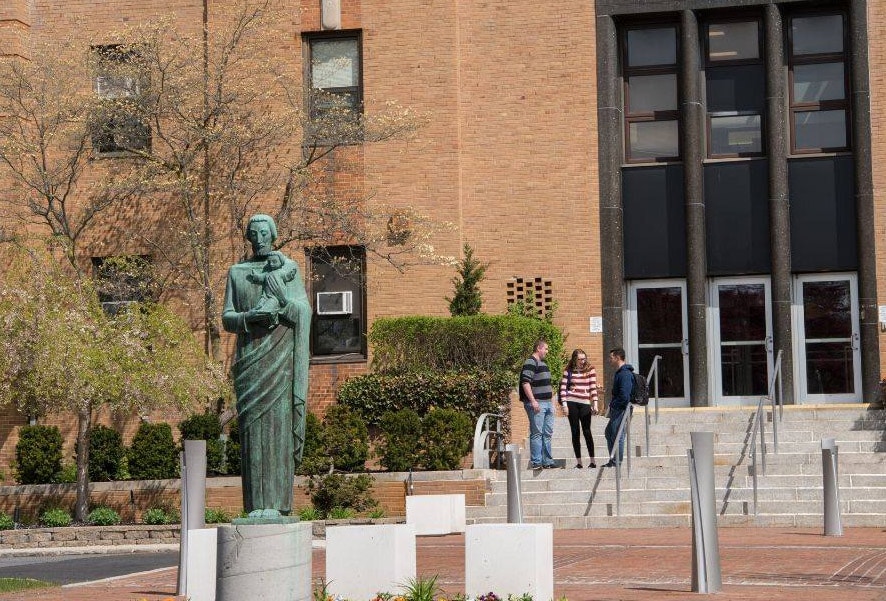The founders of a Catholic college or university typically choose a certain saint as the school’s patron because they were inspired by that saint’s life and teachings, their writings, their example, and want campus life to be modeled on that.
St. Thomas Aquinas is one saint in particular that has been the inspiration for dozens of universities around the world. He is inexorably connected with the university, as he was university-educated, taught in universities, and is a patron saint of universities and students. St. Thomas is generally associated with academic rigor, especially in regards to theology and philosophy.
Aquinas is known as the Angelic Doctor. Pope Benedict XVI speculated that this may have been because of Thomas’ virtues and purity, or even the heights to which his thoughts reached. Whatever the case, these universities saw fit to take him as their patron and this angelic nature as an exemplar for their students.
Thomas Aquinas College (California and Massachusetts)
The coursework at Thomas Aquinas College is a Great Books Program, culminating in a Bachelor of Arts in Liberal Arts. Among other things, this allows the school to coordinate and orient all coursework so that it is rooted in the Catholic faith and intellectual tradition, and especially the thought of St. Thomas Aquinas.
Founded by a seasoned group of lay Catholic educators, many of whom studied at the University of Laval (in Quebec), Thomas Aquinas College was meant as an antidote to what the founders saw as the declining condition of higher education, particularly Catholic higher education. They were inspired by St. Thomas’ life and work and took him as their patron.
Read more from our Catholic Colleges Fall 2021 special section here.
The life and death of St. Thomas helps to animate and guide the school’s calendar. For example, on the Church’s liturgical calendar, St. Thomas’ feast day is Jan. 28; on the old calendar prior to the liturgical reforms following the Second Vatican Council, his feast day was March 7, the date of his death. Every year the school celebrates St. Thomas on Jan. 28 — unless that date falls on a weekend, in which case the celebration is moved to March 7. This feast is marked by a St. Thomas Day lecture, where someone from outside the college community gives a talk about some topic related to the thought of St. Thomas Aquinas; there is a special dinner attended by students, faculty and families; and lastly, a game called “Trivial and Quadrivial Pursuit”, which is in reference to the trivium and quadrivium, the “three ways” and “four ways,” which are the basis of the liberal arts.
The most important part of St. Thomas Day celebrations, however, and one of the clearest connections to the spirituality of Aquinas, is the Mass. This is also an integral part of the fabric of campus life.
“As a token of our connection with St. Thomas and his Eucharistic devotion, we have Masses three times a day,” said Paul O’Reilly, vice president of development and president-elect of Thomas Aquinas College. These Masses are specifically scheduled so that they do not conflict with classes or any other obligations that students or faculty will have, allowing the freedom for everyone to attend Mass every day.
“[St. Thomas’] devotion to the Eucharist has become an example for us, for how we should approach the Mass,” said O’Reilly.
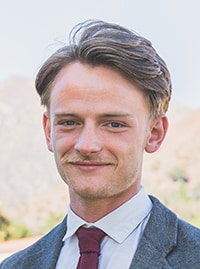
Students at TAC study theology and philosophy for all four years, and the last two years in theology are exclusively focused on the works of Thomas Aquinas. Students are even encouraged to read him in the original Latin, which all students study for their first two years. Thomas plays a physical role in the academic life of the school, as well. Every morning during finals week each semester, one of the chaplains on the California campus blesses the students with a first-class relic of St. Thomas Aquinas; on the Massachusetts campus, the students are blessed with a relic of the True Cross.
The school’s connection with Thomas Aquinas sometimes plays a part in bringing in students, and this was true for Dillon Raum, class of 2021. “St. Thomas seems to have perfectly incarnated the life of faith and reason,” Raum said, “which the college is trying to emulate. As such, he acts as a special patron for us, and we implore his help specially.”
Having first encountered St. Thomas in high school, Raum studied the Angelic Doctor a great deal at Thomas Aquinas College. “I think we all feel an intimate relation to him as our direct teacher,” he said. “We exclusively read St. Thomas for junior and senior theology, so by the end of it, you feel a love for him (and sometimes a frustration) as though he had been sitting at the table teaching you personally.”
University of St. Thomas (Texas)
In 1947 near the shores of the Gulf of Mexico, a group of Basilian Fathers founded a university, taking St. Thomas Aquinas as the school’s namesake and patron. To this day, St. Thomas is more than a name on the stationery; his life and thought are an integral part of university life.
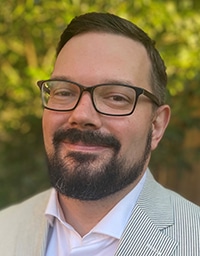
“The core curriculum at UST is in many ways Thomistic in its inspiration and orientation,” said Brian Carl, the director of UST’s Center for Thomistic Studies, an assistant professor of philosophy, and chair of the department of philosophy. “This orientation is evident in a particular way in the sequence of core philosophy courses, whose content is primarily Thomistic.
“The university also explicitly thinks about and articulates its mission in terms of a Catholic view of human nature and of the ultimate purpose of human life guided by the philosophy and theology of St. Thomas,” Carl said, who, prior to coming to UST, taught at the Dominican House of Studies in Washington, D.C.
The Center for Thomistic Studies hosts graduate programs in philosophy, which are dedicated to the thought of St. Thomas and the Thomistic philosophical tradition, offering both MA and PhD degrees. The center’s motto is Quantum potes, tantum aude — “dare to do what you can” — which is taken from the sequence Lauda Sion, composed by St. Thomas himself. Additionally, the center hosts an annual lecture, the Aquinas Lecture, on a topic related to or grounded in Aquinas’ thought. This is a major campus event, and is usually held close to his Jan. 28 feast day.
“Our core curriculum aims to form students to understand thoroughly the harmony between faith and reason,” Carl said. “Much of the content of our core curriculum is speculative and contemplative in character, but in a way ordered ultimately toward sharing the fruits of contemplation — this is the central note of the charism by which St. Thomas lived: contemplare et contemplate aliis tradere,” which means, “Contemplate and share with others the fruits of that contemplation.”
St. Thomas Aquinas permeates campus life at the University of St. Thomas, which is located in Houston, Texas. Thomas P. Harmon is associate professor and Scanlan Chair in theology. Above all, “the harmony of faith and reason, a hallmark of the thought of St. Thomas, is always on our minds, from curriculum instruction to individual courses,” Harmon said.
There are also visible reminders of the influence of St. Thomas, as several members of the Dominican order serve as faculty members, and can be seen around campus in their habits — the same habit worn by Aquinas himself.
St. Thomas Aquinas is a touchstone for the theology department, and even those professors who would not consider themselves “Thomists” still regard him as a model theologian. “We are always interested in questions of faith and reason, and are often involved in conversations around the university about how Catholic theology can both assist other disciplines and can also learn from their findings,” Harmon said.
“We are living through a period of renewal in the Church, and St. Thomas is one of the most important guiding lights for the renewal of Catholic universities,” Carl said. “I’m proud to serve at a university that not only has St. Thomas as a patron in name, but one that has looked to him as a principal guide throughout its history, including in this current period of revitalization and growth.”
Paul Senz writes from Oregon.

